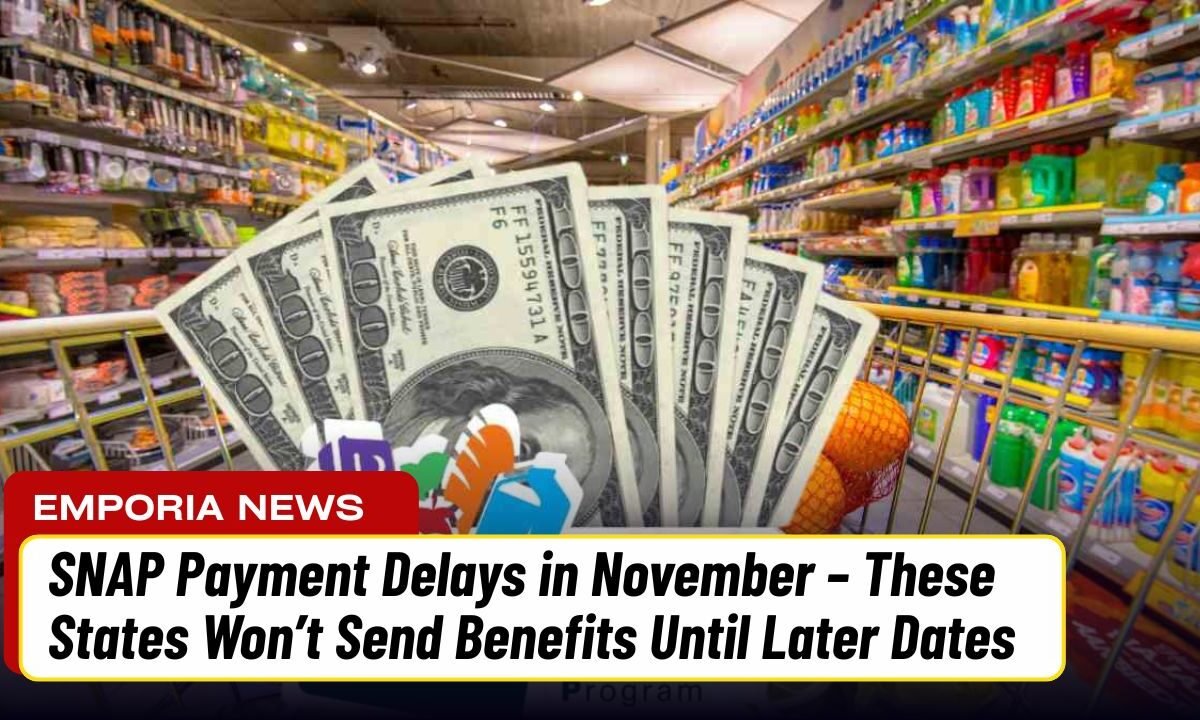A possible delay in the Supplemental Nutrition Assistance Program (SNAP) benefits this November has raised concerns among low-income households.
Although SNAP is a federally-funded initiative, the responsibility of payment issuance lies with each state. This month, some payments may not be processed on their usual schedule.
What’s at Stake with a SNAP Delay?
SNAP is a vital social-welfare program designed to help vulnerable groups and families avoid food insecurity.
Administered by the U.S. Department of Agriculture’s Food & Nutrition Service, eligible recipients receive benefits on an Electronic Benefit Transfer (EBT) card that can be used at approved grocery outlets.
The amount of assistance a household receives depends on family size and monthly net income. SNAP assumes that 30 % of a household’s income goes toward food.
The formula calculates benefits by subtracting the result of that 30 % calculation from the maximum allowable monthly benefit for that household.
For example, this year the maximum SNAP payment is $1,789 for a household of eight. Households with more than eight dependents receive an extra $218 per additional person. To qualify, gross income must not exceed 130 % of the federal poverty line.
Because these payments support essential food purchases, any delay could leave families struggling to cover basic groceries.
Which States Are Warning of Payment Delays?
Some states—including the Idaho Department of Health and Welfare, as well as agencies in New York and Texas—have issued alerts that SNAP payments may be delayed. For instance, the Pennsylvania Department of Human Services announced:
“Starting October 16, SNAP benefits will not be paid until the federal government shutdown ends and funds are released.”
The warning stems from the fact that if federal funding remains unresolved, the U.S. Department of Agriculture may not have the funds ready to distribute. Beneficiaries were alerted in early October that November payments could be affected if the shutdown persists.
What’s Changing for SNAP in 2025?
Looking ahead to 2025, SNAP participants should be prepared for policy shifts in eligibility and allowable purchases. With the passage of the so-called “One Big Beautiful Act,” tighter working requirement rules may be introduced.
Furthermore, several states plan to tighten what SNAP benefits can buy—chiefly limiting sugary snacks and junk-food items to promote healthier eating habits.
Approved purchases will continue to include fruits, vegetables, dairy, meat and poultry. Additionally, seeds and plants for home gardening, select non-alcoholic beverages and snacks may still qualify.
A delay in SNAP benefits this November could critically affect the families who rely on this support for everyday food purchases. Because payments are state-issued and federal funding remains uncertain, beneficiaries in some states should stay alert to announcements.
As policy changes loom for 2025, understanding the evolving requirements and permitted purchases will help households prepare.
FAQs
What should I do if my SNAP payment is delayed?
If your payment doesn’t arrive on the scheduled date, contact your state’s SNAP agency immediately to find out how long the delay might last and what alternative support might be available.
Will this delay affect all SNAP recipients?
No — the delay may impact only those in states where agencies have warned about funding issues. Recipients in other states may still receive payments on time.
How will the new SNAP rules in 2025 affect me?
The upcoming changes could include stricter work-activity requirements and tighter limits on allowable purchases, especially for items high in sugar or low in nutritional value. Beneficiaries should monitor updates from their state SNAP offices.




